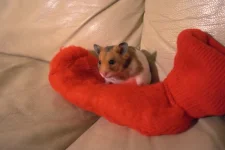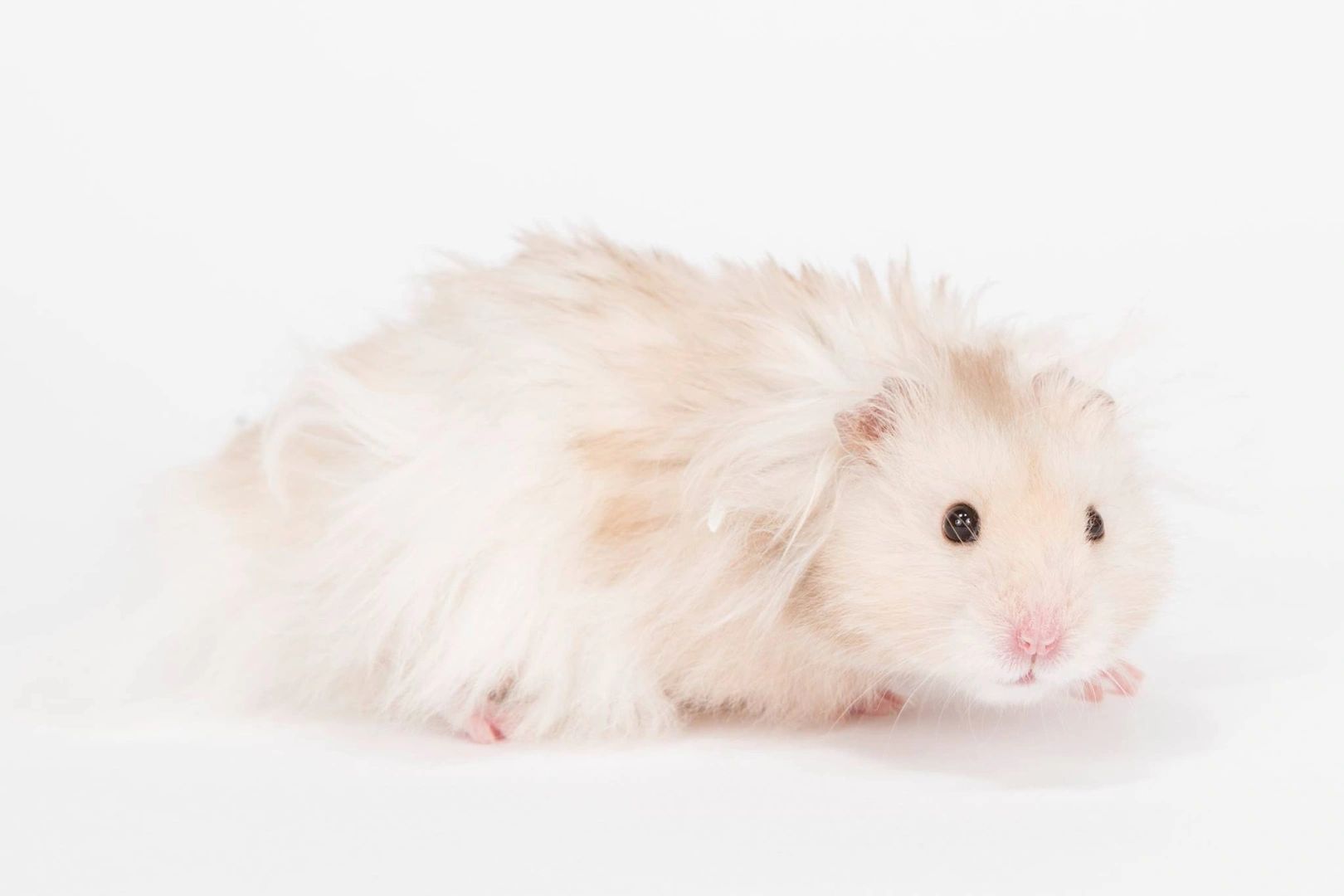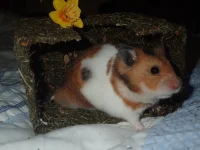Yes they can get "cage aggression" if they're in a very small cage and it's a symptom of stress. Many of us got things wrong with a first hamster

So don't worry. I'm really sorry your first experience left you feeling like that but others have found that having a good later experience really changes that early trauma feeling and gets rid of it

- Do they need constant attention like dogs, or can they be left alone for a couple days, like cats?
Generally the latter, like cats - unless you have a particularly maverick hamster who wants to come out every night. They can easily be "trained" into a routine and will often get up/come out at feeding time. Some will show signs of wanting to come out then and others won't. How a cage is set up makes a difference too. Some people with very large cages and a lot of enrichment don't actually get the hamster out - they have sufficient in their environment, and while that might be ok for their welfare, it's a shame not to develop a relationship or bond. You can have a bit of a one while they're in their cage or enclosure, but hamsters don't really like a hand or intrusion in their cage or enclosure. They quickly become territorial about their environment and behave completely differently out of the cage! That doesn't mean they would be aggressive or bite at all - with a hand in the cage, it means they may have a hissy fit or nervously follow your hand around to see what you're doing. When I say a hissy fit, you'll know that when you see it - after an intrusion they may tip something up, have a little stamp or give you a look

One thing people sometimes don't realise is that hamsters can be very communicative! And observing them is part of that and you get to read their behaviours - sometimes - not always. They can also be very intelligent and quite sneaky/funny

Which is why they are adorable. I had one who tricked me into thinking I had forgotten to put his veg out - twice. I thought I'd done it then I saw him looking at his empty plate and then giving me doggy eyed guilt-tripping looks and thought - maybe I'm thinking of yesterday, so I put the veg out. 10 minutes later he did it again! I thought no way mate - I know I put that veg out!
- What activities can you do with your ham, other than cuddle and pet them?
Activities is a difficult one to answer really. They have basic hard wired instincts - to groom, forage, roam and hoard - whether in the cage or out of it. So activities generally are in a playpen area (or maybe free roaming in a room once the hamster is hand tame). You can actually sit in a playpen with them and they can climb on you or interact with you.
So there aren't actually activities, but to give you and example. One of my Syrians now free roams in the living room, which I made hamsterproof. Just for half an hour to an hour usually. Before I let him do that I ensured he was "trained" to always walk into a tube if it was offered so I could get him back easily. It is great fun to watch and they get excited and look happy and do interesting things. At various times I offer him his tube and have him on the sofa for a while and he sits for a stroke. My other Syrian just has playpen time (he's younger, but he behaves a bit like a dog - if something is dangling in the playpen (eg my dressing gown belt once) he likes to have a tug of war with it

He's very funny. He also has a bit of sofa time sometimes and will sit for a stroke but is a bit faster than the other one and doesn't like to sit for long - but he likes climbing the back of the sofa and that's fun to watch.
Depending on how much time and input you can have, some people have trained hamsters to do tricks, a bit like rats.
They are a prey species however, so building trust is needed so they feel safe and secure and their instinct is to always have something to dive under (despite their being no birds of prey in a house). But when more confident they don't bother.
Having conversations - I swear they listen and understand sometimes! They are quite sensitive little creatures. Some people say they pick up on your feelings and know if you're sad or need comfort. They certainly pick up on mood and tone of voice - if you're really stressed then they pick that up and may be a bit stressed yourself. They respond to kindness and love as well. In some ways I think they behave a bit like dogs.
- How difficult is it to potty train your ham?
It's not difficult but it depends on various things. In the wild hamsters have a burrow with different "rooms" with tunnels between them - they will sleep/nest in one, hoard in another and use another as a toilet chamber. If a hamster is in a very basic cage without much bedding they will usually choose a corner of the cage as a toilet area. They seem to go for "corners". Which is why some multiroom houses have corner toilets to fit in them.
In the past, all my hamsters have instinctively used a potty/litter tray inside a muliroom house or very large dark house, if it's in a corner - they seem to like having an ensuite toilet so they can do everything in the dark in privacy - sleeping, eating, hoarding and toiletting. They come out for foraging, wheeling and just generally having fun. A multiroom house mimics a burrow in the wild with different rooms for different things.
But - this was in the days when we thought 6" of bedding was sufficient (it is the minimum needed). These days people often use very deep bedding which allows for other natural instincts like tunneling and having an underground burrow and often then, the toilet area will be underground somewhere as well - and can take a bit of finding. It's just a case of spot cleaning the pee first. Some will also use their sand baths as a toilet but my view is hamsters are generally a bit lazy about travelling to use a toilet! I suppose like we like a toilet nearby if we get out of bed.
So some can depend on your cage set up. With deep bedding, the hamster might use a large house as a "porch" an entrance and exit to their underground burrow. So with very deep bedding, they may not use a litter tray - on the other hand - with very deep bedding the pee gets soaked up and dries out often and although it can be a bit difficult to find to spot clean, you usually work it out eventually!
Most hamsters will not pee in their sleeping area and keep that clean and dry - some baby hamsters will until they've developed better habits. If their nesting area has had to be cleaned out that alarms them (they are very precious about their nest or sleeping area and their hoards), so quickly learn to pee somewhere else - usually! There are always exceptions.
One of mine is very tidy and organised - the other one is messy!
- Lastly, can you share some personal experiences you've had with hamsters that made you fall in love with them and/or love them even more than you already did?
Again maybe not an easy one to answer but we can all answer this one! With varying experiences. Here are some of mine,
My "first" hamster wasn't actually mine but I still fell in love with him. He came with a boyfriend when we moved in together. It was a very long time ago and he didn't have a suitable cage, but he did free roam. He wasn't even tame and couldn't be picked up - but he used to follow me round! Which is how I fell in love with him - plus he was funny and quirky.
Our "first" actual hamster was my stepson's when he was younger. Again he didn't have a suitable cage. It was a 3 tier rotostak thing - I knew nothing about hamster care at that time and just assumed it would be ok because the earlier hamster had had one.
So we quickly realised it wasn't ok. He was quite big. I actually asked the pet store if he was definitely a hamster! We used to joke that his Father must have been a guinea pig. I did all the wrong things! Picked him up via taxi using the bottom part of the rotostak as a carrier, which had a wheel attached inside (a wheel that was far too small) and he ran in the wheel all the way back in the taxi, which made me and the taxi driver laugh.
Anyway this awful cage had vertical tubes between the levels which were a bit narrower than the awful external tubes. And we didn't realise he would grow bigger. He nested in the bottom larger part but if I put my hand in it he would run at my hand and scare me. He actually had cage rage - I could see it woiuld get condensation inside - not enough ventilation. He then started to look depressed and lethargic and I had concerns. He eventually worked out the vertical tubes and would go to the second level (which had a narrow row of bars at the top) and hang from the bars madly chewing them. It was very clear he wanted to get out - it had a cap opening so we'd take that off and let him hop into a hamster ball (also bad for them!). So he wanted to come out a lot.
This was all within the space of the first two weeks and one day he got stuck in one of the vertical tubes. He looked scared - his head sticking out the top, I was scared - assumed if sold for hamsters it was safe (many things sold for hamsters are not safe and there's no legislation), he did eventually manage to wriggle himself out of it. But we then put all three tiers at floor level, removed the vertical tubes and left the external tubes connecting the levels. While I madly googled to find out more about hamster cages.
At the time the "minimum" was an 80cm by 50cm cage, so I ordered one that night (ouch - it was expensive and had just spent a lot on silly tubes and levels for the rotostak). It was here the next day.
So at this stage, stepson was only 6 so it was my responsibility - as it is with children, and I had various of moments of thinking - this is hassle and an extra chore on top of everything else. One night he escaped the ball by bashing into something and knocking the lid off (common) and casually walked off behind the fridge. Major panic - he wouldn't come out - we ended up having to remove a worktop to try and carefully get the fridge out and while doing that he casually walked out again and started to go across the room. So I was on my hands and knees trying to pick him up. Stressful! Didn't happen again though - we did bathtub taming mainly.
When the new cage arrived I put bedding in it, had a nice new big wheel, a shelf with a little plastic pod house (the one from the Hamster heaven) and a little wooden house with a flat top and a kind of hanging ladder thing (that was dangerous).
And I got him out and put him in the new cage that night as a sort of cleaning job before bed.
Well that was major. He sat there absolutely terrified and shook - and this went on for the next few nights and even my partner was really worried about him - we thought he might die of fright. Partner suggested putting a blanket on top of the cage. That didn't help. He sat on the platform and shook. This went on for about a week and suddenly it was the major focus of our lives and we were all upset and worried about him.
And I think that was the point I fell in love with him. I suddenly realised this wasn't an extra chore, this was a vulnerable little thing that needed love and care and relied on us getting things right totally. The sitting and shaking went on for 10 days and we didn't know what to do. Partner said maybe we should put him back in the old cage - we couldn't - he'd got bigger again and the tubes weren't safe.
Then suddenly on day 10 he was happy. He was jumping in and out of his wheel - running fast and jumping out and flumping on the bedding and having fun and almost smiling. And we all loved him and were relieved he was happy.
He made a cosy nest in the tiny little plastic pod house (but the top kept popping off). He thought the food bowl in the corner was a toilet so kept weeing in it - because it was in a corner, and the wee would run down the shelf. So I had to put the toilet on top of the inset food bowl and give him a different food bowl. Every day I'd come down and the toilet had been moved down the shelf and the little inset food bowl flipped out. I'd put it back again and find the same thing every day. It was a game!
I saw him on the hanging ladder one day and he jumped off and caught his leg, narrowly missing getting his leg caught in one of the hanging chains. Realised that wasn't safe and removed that. At that time it was very common for hamsters to end up with broken legs due to unsafe hanging toys.
He flourished in his new cage, I made various changes based on his behaviour and needs. The pod house wasn't workjing - it got so stuffed with bedding that it kept popping off the shelf and ending up on the substrate and he'd get very upset and anxious as if someone else had done it. So I had the idea to replace the shelf with a large, flat topped guinea pig house, which doubled up as a shelf and also made a bigger house underneath - because he completely ignored the little wooden house. He moved straight into that and built a huge nest at one end. It was so big I thought I'd try putting his toilet inside in one corner and he started using it. Life became easier. He was a bit shy about coming out but would walk into a tube and had sofa time. He was a big gentle, rather nervous, giant. Depending on the time of evening he would sometimes go to sleep on my knee under a blanket. He loved having his ears stroked and would often sit between us on the sofa

We had various obstacle courses set up for playtime with childrens toys (which need checking for safety). And the love grew - he was my baby! And he was also very much a family pet. He reacted with happiness if he heard stepson's child voice and seemed to know he was a child and was very tolerant. He wasn't so keen on men but eventually accepted sitting on my partner.
He had his own fleece blanket on the sofa which he loved - and that became the hamster blanket - all the hamsters have had that. And he had his donut bed (only out of the cage - not in the cage as fabric can be chewed). I realised quite quickly that there wasn't quite enough space in the cage for a large hamster and larger items and still have space for him to do anything in the cage, so after a months he was upgraded to a 100cm x 50cm Barney cage and a bigger multiroom house. Only this time I had read up a lot and was very careful with the transition and it went very well. He had an adjustment day to play in it first and moved all his old bedding across at moving time. Unlike that first, awful cold turkey sudden big change.
I've been keeping hamsters ever since

(Even after the boy lost interest and grew up).
You just need to keep talking to them - they get to know you and trust you and watch and listen - behaviour can sometimes be to alert you to something.
So this was our first hamster - beloved Charlie





























